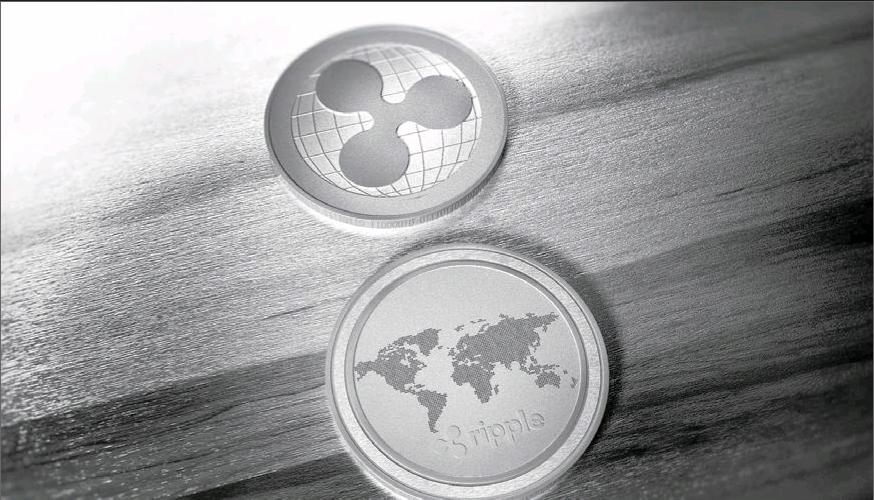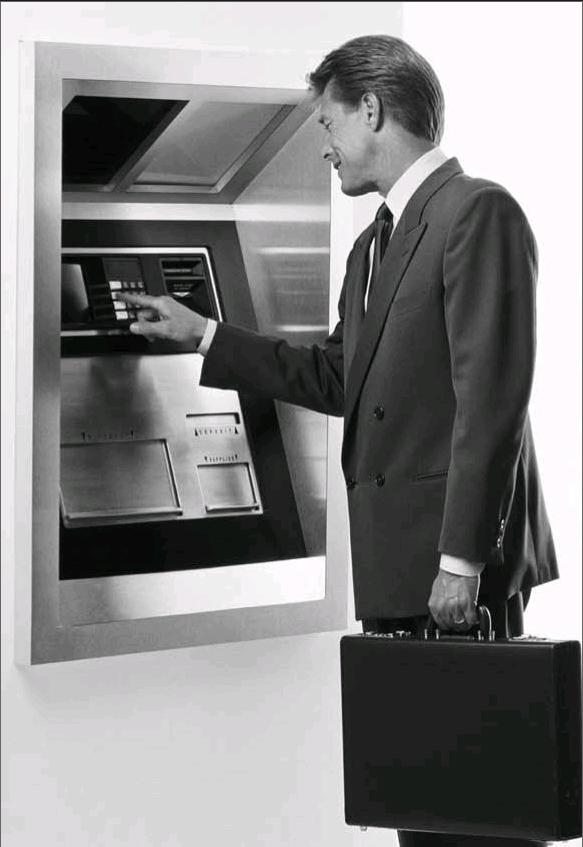The Rage of Ripples to Come in China?
2014-10-21


The Bitcoin might be the most famous digital currency in the world, but there are other digital currencies than it. When the Bitcoin went though rise and fall in China, another digital currency by the name Ripple came to China with its payment agreement to look for development opportunities.
On June 30, Greg Kidd, CEO of Ripple Labs, made a detailed description of the “benefits” Ripple payment agreement can bring to Chinese consumers: when a pair of parents in China need to transfer US$10 thousand to their child in the U.S., they need to pay 60 yuan, or 0.1% of the amount they transfer, to the banks as the commission, in addition to the 150-yuan telecom fees. However, if the bank adopts the Ripple payment agreement, they no longer need to pay the 150 yuan.
Different from the Bitcoin which aims to challenge the mintages of different countries, the Ripple seems to have chosen an easier opponent. In the Ripple system, the currency is far from being the core, which is actually the Ripple payment agreement. This decentralized payment agreement aims to challenge the agreement of Society for Worldwide Interbank Financial Telecommunication(SWIFT), which has been commonly used in the global banking industry. The SWIFT is where the abovementioned 150-yuan telecom fees go to.
Challenge SWIFT
The SWIFT is an international interbank organization. With the SWIFT network, a bank in China can trade client information, make interbank capital liquidation and check liquidation, and share the information of balance and securities with a New Yorkbased institution through digitalized methods. Presently, most of the banks in the world have already adopted the this SWIFT system. The wide usage of SWIFT provides the banks with the safe, reliable, fast, standardized and automatic communication system, which has greatly improved the settlement speed of the banks.
Ripple Labs where Greg Kidd is working created the Ripple agreement through decentralized payment and liquidation system following the idea of decentralization of the Bitcoin. It is to challenge the dominance of the SWIFT. According to Greg Kidd, the money is only a kind of credit information storing in the general account in the digital age. Nowadays, most of the information can flow freely through the Internet while the transfer of money is still full of obstacles. The reason is that there are too many independent networks and payment agreements in the current financial system and the centralized network usually costs a lot – the employees wages, the spending on servers and SWIFTs desire for profits.endprint
Take the Chinese banks for example: apart from the commissions these banks charge for the money transfer, they also ask for the “telecom fees”with different proportions on behalf of the SWIFT.
Kidd says that the Ripple agreement is actually “an open account that everyone could see through”. This open-source software can allow the servers (the gateway of banks and currency exchangers with the access to the agreement) in the world to conduct point-to-point financial trade. It exists in the form of a distributed network without the centralized management, just like a general currency exchanger.
“If the Ripple agreement becomes the standard agreement of the financial trade,” Kidd says. “People can transfer any kinds of currencies freely through this payment network, no matter they are U.S. dollars, euros, yuan or even Bitcoins. The payment will be made as easily and quickly as sending an email. Moreover, there will be no so-called commission for cross-bank or crossregion money transfer.”
XRP and the Profit Pattern
But Ripple Labs is not a non-profit organization. They earn their money through their own profit pattern – the XRP.
The XRP is the digital currency based on the mathematics and cryptology like the Bitcoin. However, different from the Bitcoin without real utilities, the XRP could function as the bridging currency and safeguard in the Ripple system. The function as the safeguard is indispensable and it requires the gateways joining the agreement to hold a small amount of XRP.
Due to the openness of the Ripple agreement, the hackers could create a large volume of “junk accounts” to break down the network. In order to avoid this, Ripple Labs requires each Ripple account to own at least 20 XRP. 1/106 XRP will be consumed for each trade. The cost is almost nothing for normal traders, but will be a very large volume for the hackers that created substantial fake accounts and trading information. Such a measure is used by Ripple Labs to keep the malevolent deals at bay.
Theoretically, each gateway do not need to spend much acquiring the XRP and the price is very low – 0.4 cents for one XRP. Like the Bitcoin, there will be no oversupply of the XRP (100 billion in total). However, since each trade can consume a little XRP, the volume of XRP will be reduced bit by bit. If the Ripple agreement can become the mainstream payment agreement in the world, the gateways will have more extensive demand for the XRP – the high demand and the reduced volume will lead to the appreciation of the XRP.endprint
Presently, Ripple Labs holds 77 billion XRP, whose total value is US$ 300 million based on the current price estimated at 0.4 cents. Ripple Labs says that it will donate 55 billion XRP to the users of the system in order to recruit more participators while it plans to hold the rest 22 billion XRP. If the Ripple agreement has become the mainstream payment agreement, the value of XRP Ripple Labs is holding, despite the reduced volume, will be still high given the possible appreciation of the digital currency.
But all these are now only assumptions. Being a completely new and emerging concept, the agreement has been accepted by only one bank by now– Germany-based Fidor. This bank is an Internet direct-sale bank headquartered in Munich. It is known for its positive exploration in the field of digital currency. Before clasping hands with the XRP, it also worked with the Bitcoin, which was then thought to be a creative thing.
With a substantial start, it is still a long way for Ripple to “conquer” the banks, especially the traditional banks not so innovative as Fidor.
Seeking Opportunities in China
It might be more difficult to conquer the Chinese banks since the watchdog in this country is more strict and fearsome. The Bitcoin was just blocked in China as its central bank forbad the banks and third-party payment institutions to provide services of opening accounts, charging, payment and cashing for the Bitcoin. The fate of its predecessor might be a warning for XRP.
In addition, most of the banks in China are state-owned enterprises, which are quite hesitant in trying out new things.
But Ripple Labs has already begun to dig into the Chinese market. Some startups related to Ripple has already come out in China. Among them, Ripple (Beijing) Technology Co., Ltd., which was founded by Sun Yuchen born in the early 1990s, had already become the strategic partner for Ripple Labs in the Greater China Area. Ripple Labs hold a portion of the companys shares and Sun was appointed the chief representative of Ripple Labs in the Greater China Area. Now his team is the major force for Ripple Labs expansion in the Chinese market.
When Ripple Labs CEO Greg Kidd visited China at the end of June, he said that Ripple Labs had already communicated with the watchdog and financial institutions in China, hoping to be given the opportunity to experiment Ripple agreement in China. However, it is hard to forecast when there will be the first bank to accept the Ripple agreement.endprint
Before that, Kidd was present in a New Financial Alliance summit in Beijing and made a keynote speech. Present in the summit were also Wu Xiaoling, former vice president of the central bank, and Dong Wenbiao, board chairman of Minsheng Bank.
A director of a large state-owned banks payment department says that the payment system is an important infrastructure for the financial system. Any defects in the infrastructure might lead to the fluidity crisis or even financial crisis. Therefore, he believes that the financial regulatory department of China might hold a conservative attitude towards the Ripple agreement. However, he thinks it possible for the Ripple agreement to become a normal and common standard for the banking industry like the SWIFT, even though it will take a long time to take place.
But Kidd is not consent with the concerns over the safety of Ripple agreement. In his opinion, the current centralized payment agreement is actually riskier since the center node is more vulnerable to the attacks while the decentralized system Ripple advocates has the diluted risk and the safety is ensured by the agreement. “This is a trend formed after the Bitcoin and the base for the emergence of Ripple,” he says.
Some governmental officials in China also worry about the regulatory method for the Ripple agreement. For this, Kidd says that it is still too early to talk about the regulation since the Ripple is a new thing. The watchdogs in other countries, such as the Federal Re- serve, the Treasury Department of the U.S., and the European central bank are not studying into this new agreement. Actually, Ripple expects stricter, instead of relaxed, regulation from the government, as long as the regulation is open and transparent.
In addition, Kidd, who once worked in the Federal Reserve, thinks it not too difficult to communicate with the Chinese regulatory department. “In China we know which departments we should we talk to. Moreover, the regulatory system in China follows a hierarchical pattern, only requiring us to have got along with the senior departments. In comparison, there are Federal Reserve and similar departments for each state, which need us to communicate independently. The communication cost is thus very high,” Kidd says.
Whats more interesting is that the Ripple agreement also supports the money transfer between the accounts of the same currencies without the additional cross-bank or cross-region commissions. In China, the cross-bank or cross-region money transfer needs to go through the clearing center of the central bank. This means that Ripple is somewhat a rival of the central bank of China.
Someone says that the Ripple system is too complicated for the ordinary consumers to understand this. But in Kidds opinion, ordinary consumers do not need to understand how the Ripple agreement works and they do not even need to know this noun. What consumers need to know is that they can enjoy a faster and cheaper transfer method which is brought by Ripple as long as they find the bank adopting the Ripple agreement.
This reveals the most important task of Ripple Labs in China – finding a bank willing to try the new thing.endprint
